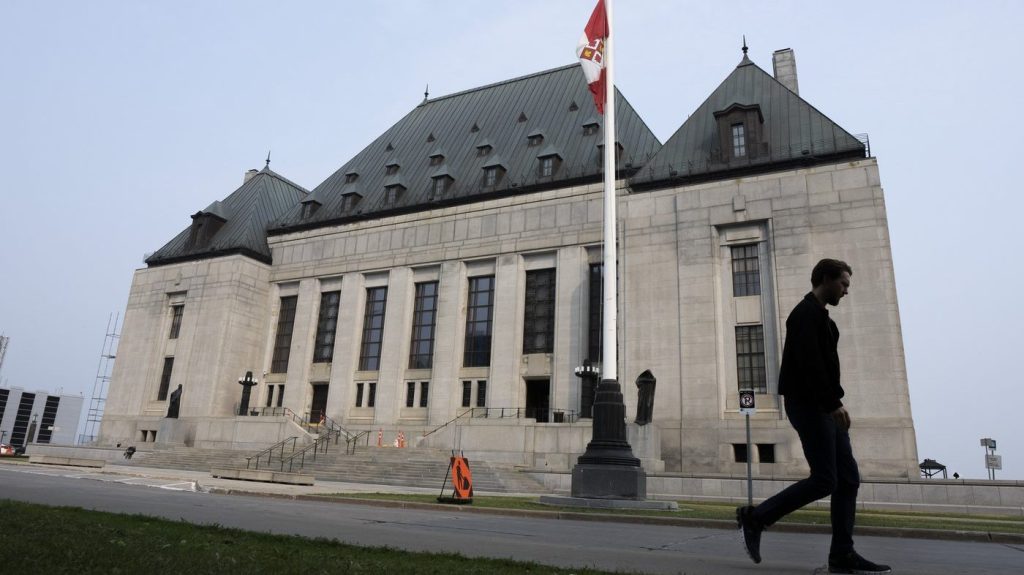Court of Quebec can’t impose systemic measures in youth law: Supreme Court ruling

The Youth Division of the Court of Quebec does not have the power to impose systemic measures when it’s considering the case of a child whose rights have been violated.
The Supreme Court of Canada has put an end to the debate surrounding the limits in this type of case and has ruled in favor with the Director of Youth Protection (DPJ) and the Centre de santé et de services sociaux (CISSS).
In a unanimous decision rendered Friday and written by Chief Justice Richard Wagner, the court confirmed the decisions by the Superior Court and the Court of Appeal which had overturned the ruling in July 2019 by Quebec Court Justice Mélanie Roy.
Advertisement
The case was initially brought before the youth court following a teenage girl’s stay in a rehabilitation centre. The teenager and her parents, who cannot be identified, asked the court to declare that the child’s rights had been violated by multiple isolation and restraint measures while she was at the rehabilitation centre. In this case, neither the rehabilitation centre, nor the DPJ nor the CISSS can be identified either.
Children’s rights violated
The request was based on section 91 of the Youth Protection Act, which allows a judge to order that a situation be corrected when a child’s rights are not respected. Judge Roy ruled in favor of the child and their parents and ordered that a series of corrective measures be put in place.
However, some of these measures targeted all centres and their staff, including demanding mental health training for workers, educators, and intervention officers, adding mental health professionals in all treatment units, adopting safety measure for all isolation rooms, and covering the walls with injury-proof material.
Judge Roy also blamed the DPJ and the CISSS for covering the child’s head to prevent them from spitting and ordered the CISSS to establish a protocol to determine the procedure to follow when a child spits.
Advertisement
The Director of Youth Protection had acknowledged that the child’s rights had been violated and accepted all orders concerning the child, but they appealed all the systemic orders that concerned all the facilities – arguing that the Court of Quebec had exceeded its powers.
Judge Yves Poirier had sided with the ruling on Feb. 1, 2021, that “certain conclusions of the decision are illegal considering that they do not aim to correct the rights of X that were violated. In the Youth Division of the Court of Quebec, it cannot issue an order concerning the administration entrusted to the director and that is not directly related to the child whose development is compromised.”
He had rewritten the orders so that they only applied to the teenager, for example, that mental health training be given to the workers in charge of her, that a mental health professional be assigned to the unit where she was housed and so on. He had also specified that “conclusions of a general nature and not directly targeting the injured child could be issued as recommendations” rather than in the form of orders.
The Commission des droits de la personne et des droits de la jeunesse (CDPDJ), the teenager and her parents challenged this decision before the Quebec Court of Appeal, which in addition to certain changes in the wording of the Superior Court orders, was upheld by Justice Poirier’s decision.
The Supreme Court in turn concluded that the legislature intended to entrust the court with the corrective powers necessary to ensure the most complete protection of the interests and rights of the child whose situation is before the court. According to Chief Justice Wagner, “any corrective measure that is ordered must protect the interests and rights of the child whose situation is before the court (…) the court may order any corrective measure that is likely to contribute effectively to preventing the recurrence of the injurious situation, provided that this measure is related to the protection of the interests and rights of the child.”
Advertisement
Judge Wagner emphasized that “there is nothing to indicate that the legislature intended to empower the court to order corrective measures targeting children whose situations are not before it, but who could find themselves in the same harmful situation as the child before it.”
However, he added that, “this does not mean that a corrective measure cannot have the indirect and incidental consequence of protecting the interests and rights of other children who might find themselves in the same harmful situation as the child whose situation is before the court.”
Thus, the court may order corrective measures to stop a systemic or institutional practice “provided that the child whose rights have been infringed is at risk of suffering the injurious situation again, that the corrective measure is capable of effectively contributing to preventing the recurrence of the injurious situation and that it is linked to the protection of the interests and rights of the child whose situation is before the court”.
“For a corrective measure of a preventive nature to be ordered, it is important that the child whose situation is before the court is at risk of suffering the harmful situation again,” he said.
In all cases, the corrective measures imposed by the court must have the aim of protecting the interests and rights of the child whose situation is before the court.
Advertisement
–This report by La Presse Canadienne was translated by CityNews
